In the world of luxury and artistry, there exists a realm where the exceptional meets the extraordinary—exquisite jewelry designs. These timeless creations aren’t just ornaments; they are enduring testaments to human ingenuity, craftsmanship, and the sheer beauty of the natural world.
Imagine a universe where a single gemstone can encapsulate centuries of history and passion, where every facet tells a story, and every setting is a work of art. In this world, we find ourselves ready to journey to discover eight of the most magnificent jewelry designs in history.
We are about to enter the enchanting realm of the Hope Diamond, a blue marvel with a history as deep and mysterious as the sea. We’ll uncover the multifaceted majesty of the Cullinan Diamond, a gem once part of a single colossal stone. We’ll explore the rich blue tapestry of the Star of India, whose journey has taken it from the depths of the earth to the hallowed halls of the American Museum of Natural History.
But that’s not all. Our voyage will also introduce us to the Fabergé Eggs, intricate masterpieces created for the Russian Imperial family. We’ll admire the Pink Star Diamond, a blushing beauty of exceptional value, and the Graff Pink, a rarity in pink diamonds that set a record in the world of auctions.
We’ll marvel at the vivid green of the Dresden Green Diamond, one of the world’s largest and finest green diamonds. The Maharaja of Patiala’s opulent necklace, a royal heirloom rich in myth and history, won’t be the last thing to capture our attention.
These remarkable creations are more than just jewelry; they embody human achievement, symbols of culture, and testaments to the enduring allure of the finest craftsmanship. Join us as we dive deep into the heart of these remarkable pieces, celebrating the artistry and the history that has shaped them. Each gem, each design, is a chapter in a story that spans centuries, and it’s a story that’s about to unfold before your very eyes.
Exquisite Jewelry Designs
The Hope Diamond – A Blue Marvel
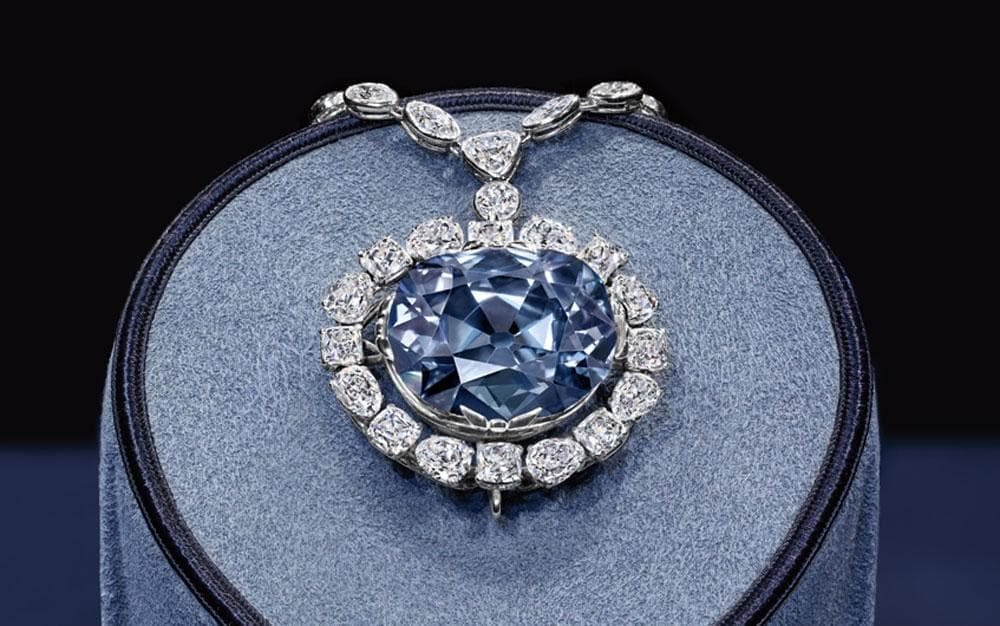
In the enchanting world of exquisite jewelry, the Hope Diamond stands as a timeless icon. Revered for its mesmerizing blue hue and steeped in history as deep and mysterious as the ocean, this legendary gemstone is nothing short of a marvel.
A Blue Like No Other
The Hope Diamond is not just blue; it’s a blue like no other. Its stunning, vivid hue is often described as an intense deep blue with a hint of gray. This unique color, known as “Hope Blue,” is one of the rarest and most sought-after shades in the world of gemology. Its brilliance and depth have captivated the hearts of countless admirers for centuries.
The Origins
The story of the Hope Diamond begins in the Golconda mines of India, where some of the world’s most famous diamonds were discovered. Mined more than three centuries ago, this breathtaking gem was believed to have adorned the eye of a sacred statue of the Hindu goddess Sita. Its original form was much larger, weighing an astounding 112 carats. Its journey, however, was just beginning.
Famous Owners and Their Tales
Throughout its long history, the Hope Diamond has changed hands, and with each new owner, new legends were born. One of its earliest documented owners was the French merchant traveler Jean-Baptiste Tavernier, who purchased the diamond during his travels in India. However, the acquisition by King Louis XIV of France truly elevated its status.
Under King Louis XIV, the diamond was recut to 67.125 carats and became known as the “Blue Diamond of the Crown” and later as the “French Blue.” It was housed in the royal treasury, which remained until the tumultuous times of the French Revolution. The stone disappeared during this period but reemerged in London with a changed identity.
Henry Philip Hope, an English banker, later acquired the Hope Diamond, which is how it got its well-known name. The diamond remained in the Hope family for many years. It was sold to a series of owners, including the McLean family of Washington, D.C., whose tragic tale added to the diamond’s mystique.
The Curse
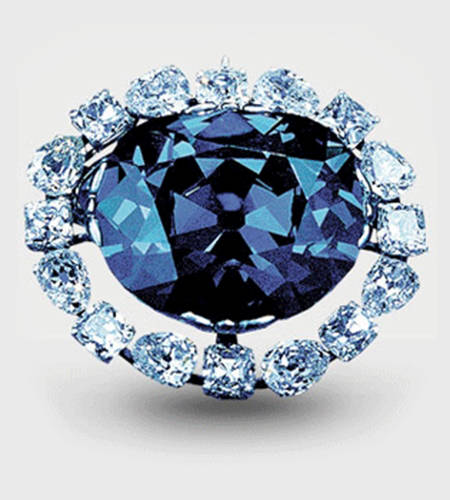
One of the most intriguing aspects of the Hope Diamond is the legend of the curse that supposedly accompanies it. This curse is believed to have originated from its theft during the French Revolution. According to this legend, misfortune, and tragedy would befall anyone who possessed or wore the diamond.
From the beheadings of French royalty to the untimely deaths of subsequent owners, the curse of the Hope Diamond became a famous and eerie tale. Whether one believes in the curse or not, the stories surrounding the diamond have added a layer of mystery that further enhances its allure.
The Hope Diamond’s incredible journey from the depths of the Golconda mines to the world stage, its famous owners, and the shroud of mystery surrounding it make this remarkable gemstone one of the most iconic and celebrated in the world. Its legacy continues to shine brightly, a testament to the enduring fascination of extraordinary gemstones and the indomitable human spirit that seeks to possess and protect their unparalleled beauty.
The Hope Diamond’s journey through the centuries has seen it travel across continents and cultures, leaving a trail of awe and intrigue. Its fascinating history goes beyond its illustrious owners and the stories surrounding it.
The Hope Diamond Today
Today, the Hope Diamond resides in the Smithsonian National Museum of Natural History in Washington, D.C. It is a centerpiece of the museum’s gem and mineral collection, which continues to captivate visitors worldwide. The diamond’s specially designed setting protects it and brings out its deep blue radiance, symbolizing natural wonder and human achievement.
The Mystique of Hope
What makes the Hope Diamond so mesmerizing? Is it the ethereal blue color that seems to hold the ocean’s depths within its facets? Is it the centuries of history and lore that have woven a tapestry of mystery around it? Or is it the undying human fascination with the extraordinary?
The Hope Diamond represents the pinnacle of gemology, showcasing the beauty of nature and the craftsmanship of those who have shaped it over the years. Its existence is a testament to the enduring human quest for the extraordinary and the desire to hold a piece of the remarkable in one’s hand.
Unraveling the Mysteries
While the curse of the Hope Diamond may remain a subject of debate, the gem’s history continues to be a source of fascination for scholars, gemologists, and history enthusiasts alike. Its stunning transformation, from a rough gem in the mines of India to a polished treasure gracing the Smithsonian, is a testament to human ingenuity and the enduring allure of the extraordinary.
The Hope Diamond remains a symbol of human achievement, a reflection of the artistry of the lapidary, and an embodiment of the natural wonders hidden beneath the Earth’s surface. Its extraordinary blue hue is a marvel that has inspired poets, artists, and storytellers for generations.
In the ever-evolving tale of the Hope Diamond, we find a testament to the power of beauty, mystery, and the enduring allure of the most exquisite gems in history. Visitors continue to flock to the Smithsonian to glimpse this blue marvel, it reminds us that jewelry holds treasures beyond adornment; it embodies human history, artistry, and the beauty of the natural world. With its deep blue brilliance, the Hope Diamond remains a constant source of fascination, inviting us to wonder and dream in the presence of an enduring legend.
The Cullinan Diamond: Majestic and Multi-Faceted

In the grand tapestry of remarkable gemstones, the Cullinan Diamond is a true marvel. It is celebrated for its exceptional size and fascinating journey from the heart of the Earth to the hands of master craftsmen. As one of the largest gem-quality diamonds ever discovered, the Cullinan Diamond’s story is grandeur, artistry, and unparalleled beauty.
A Gift from the Earth
The story of the Cullinan Diamond begins in the Premier Mine of South Africa on January 26, 1905. Miners unearthed a rough stone that weighed an astonishing 3,106 carats (or about 1.37 pounds). The discovery left the world in awe, as it was a true testament to the Earth’s ability to create extraordinary beauty beneath its surface.
An Unprecedented Size
The Cullinan Diamond was not just a large gem but a giant. At its discovery, it was more than three times the size of any diamond found before. Its sheer size defied the imagination. Holding the rough diamond, one could hardly fathom the exquisite gems emerging from this uncut marvel.
The Cutting Process
Cutting the Cullinan Diamond was an endeavor of unparalleled skill and precision. The cutting was entrusted to a team of experts under the guidance of master diamond cutter Joseph Asscher. The process was delicate and laborious, involving months of planning and execution.
The diamond was first marked to identify the points where it would be cleaved. Each cut required the utmost care, as the diamond’s value lay not just in its size but also in the potential to create flawless gemstones. Finally, on February 10, 1908, the Cullinan Diamond was cleaved into two pieces with a single blow.
Division into Remarkable Gems
The cleaving of the Cullinan Diamond was a historic moment in the world of gemology. The result was not just two pieces but a treasure trove of exceptional gems. The larger piece, known as the Cullinan I or the Great Star of Africa, weighed an astounding 530.2 carats and remains the largest clear-cut diamond in the world. It now adorns the head of the Sovereign’s Sceptre with Cross, one of the British Crown Jewels.
The second-largest gem cut from the Cullinan Diamond, the Cullinan II or the Second Star of Africa, weighs 317.4 carats and is set in the Imperial State Crown of Great Britain.
The Cullinan Diamond yielded an incredible 105 gems of various sizes and shapes. It is a testament to the value of a skilled hand in revealing the inner beauty of a rough stone, as well as the extraordinary potential that the Earth hides beneath its surface.
The Cullinan Diamond’s journey from an unimaginable rough stone to the magnificent gemstones that now grace the British Crown Jewels is a story of human expertise, precision, and the enduring allure of exceptional gemstones. Its remarkable size and the extraordinary gems it produced continue to be a testament to the wonder and splendor that the Earth can bestow upon us, waiting to be revealed by those with the vision and the skill to unlock its secrets.
The Star of India – A Sapphire Spectacle
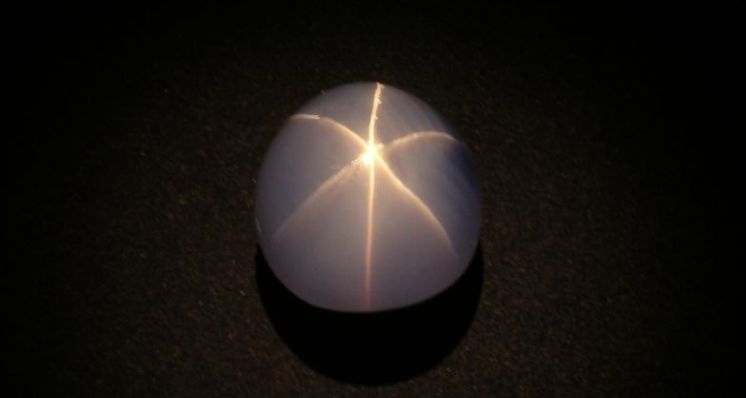
Amidst the world of exquisite gemstones, the Star of India stands as a sapphire spectacle, capturing the hearts and imaginations of those who lay their eyes upon it. Beyond its mesmerizing beauty, this remarkable sapphire has a history as captivating as its deep blue hue. Join us as we journey through time to uncover the grandeur of the Star of India, a gem with a past as rich as the ocean.
A Precious Discovery
The tale of the Star of India begins in the illustrious gem mines of Sri Lanka, where it was discovered centuries ago. Sri Lanka, renowned for its sapphire mines, yielded this exceptional gem cut to perfection and bestowed with a name befitting its celestial radiance. This sapphire’s name was a nod to the captivating star-like pattern that danced across its surface, a visual spectacle that made it an instant treasure.
The Sapphire’s Journey
The Star of India embarked on a journey to see it cross continents and cultures, each step of its odyssey adding to its allure. From the lush landscapes of Sri Lanka, the sapphire found its way into the hands of Maharajas and Maharani, who cherished it as a symbol of luxury and prestige.
But the gem’s story took an unusual turn as it ventured into the American landscape. It found its home at the American Museum of Natural History in New York City, where it has resided for over a century.
A Unique Setting
The Star of India is now honored in the museum’s mineral and gem collection. It’s part of the “J.P. Morgan Hall of Gems” and continues to enchant visitors worldwide. Encased in a blue velvet setting that echoes its rich color, the sapphire’s beauty is accentuated by a backdrop of educational displays that delve into the world of gemology.
The Star of India’s journey from the heart of Sri Lanka to the hallowed halls of the American Museum of Natural History is a testament to its enduring allure. It’s not merely a gem but a symbol of human fascination with the beauty hidden beneath the Earth’s surface. Its celestial appearance and rich history elevate it from a precious stone to a masterpiece that continues to captivate and inspire.
The Fabergé Eggs – Imperial Elegance
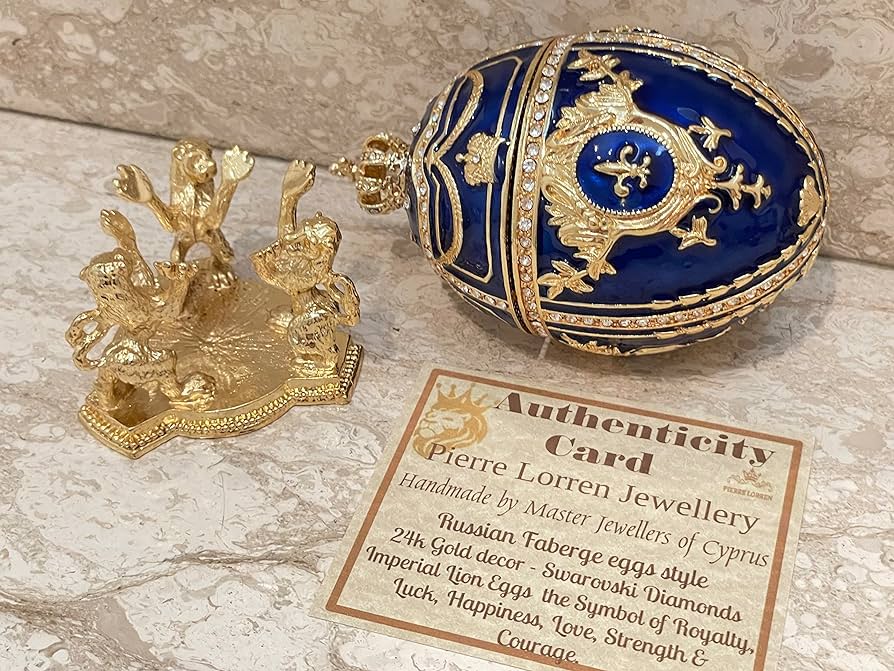
In the world of exquisite jewelry and artistry, the Fabergé Eggs are unparalleled masterpieces, embodying the epitome of craftsmanship and imperial splendor. These exquisite creations, sought after by collectors and enthusiasts worldwide, tell a story of luxury and artistic innovation. Let’s delve into the world of the Fabergé Eggs, exploring the artistry and the history behind these magnificent treasures.
The Craftsmanship Unveiled
The Fabergé Eggs are the brainchild of the renowned Russian jeweler and goldsmith Peter Carl Fabergé. Crafted with meticulous attention to detail, each of these eggs is a testament to the exceptional skill and artistry of the Fabergé workshop. The tradition began in 1885 when Tsar Alexander III commissioned the first Fabergé Egg as an Easter gift for his wife, the Empress Maria Feodorovna.
What sets these eggs apart is their exquisite materials and their mechanical ingenuity. The surprise element within each egg adds a layer of delight to the already beautiful exterior. Over the years, these eggs became an annual tradition, and each year, the Fabergé workshop created a new masterpiece, unveiling innovation and artistry with every creation.
A Royal Connection
The creation of the Fabergé Eggs was deeply entwined with the Russian Imperial family. The tradition continued under Tsar Nicholas II, who ordered two eggs yearly – one for his mother and one for his wife. These eggs served as tokens of love, each with a unique surprise hidden inside, such as a miniature portrait, a clock, or a tiny automaton.
The connection to the Russian Imperial family brought prestige and patronage to the Fabergé workshop. Each egg reflected the close relationship between the Romanovs and the House of Fabergé.
Intricate Designs and Surprises
The Fabergé Eggs are not just about stunning materials; they’re also known for their intricate and imaginative designs. The eggs are typically made of precious metals, adorned with gemstones and enamel, and often feature detailed miniature paintings or designs. The surprises concealed inside were equally impressive, from miniature carriages and animals to intricate clock mechanisms.
One of the most famous creations is the “Imperial Coronation Egg” of 1897, commemorating Tsarina Alexandra’s coronation. This egg reveals a replica of the Imperial Crown, with a dazzling, rose-cut diamond as a surprise. Another remarkable piece is the “Winter Egg” of 1913, encrusted with over 3,000 diamonds and containing a miniature model of the Romanov palace.
A Legacy Preserved
The Fabergé Eggs, often described as “jeweled windows into history,” are a testament to the craftsmanship and artistry of the House of Fabergé. These masterpieces have transcended their original purpose as Easter gifts, becoming icons of imperial elegance and exquisite design.
Many Fabergé Eggs are now treasured in museum collections and private hands, preserving their legacy for generations. These creations continue to be celebrated as an artistic triumph and a symbol of a bygone era of luxury and craftsmanship.
The Fabergé Eggs remain a pinnacle of both jewelry and art, enchanting admirers with their beauty, intricate surprises, and the story they tell of a time when imperial elegance and craftsmanship merged into something truly extraordinary.
A Legacy of Artistic Triumph
The Fabergé Eggs continue to captivate the world with their enduring legacy. These remarkable creations are not just beautiful jewelry pieces but historical artifacts that offer a glimpse into the opulent world of the Russian Imperial family.
As the tradition of the Fabergé Eggs evolved, each new creation brought a new challenge for the master artisans at the Fabergé workshop. These artisans pushed the boundaries of their craft, using innovative techniques and materials to create ever more intricate and elaborate designs. The Eggs served as a canvas for their creativity, and the surprises within were not just novelties but masterpieces in their own right.
For instance, the Imperial Coronation Egg of 1897 holds a perfect replica of the Imperial Crown, a feat of incredible skill and artistry. The attention to detail in these creations is a testament to the dedication and passion of the artisans involved.
A Global Fascination
The fascination with Fabergé Eggs is not confined to Russia or the world of jewelry collectors. These treasures have a global appeal that transcends borders and cultures. They are admired for their artistic value, historical significance, and the sheer beauty of their design.
Today, many of the Fabergé Eggs are housed in some of the world’s most prestigious museums and private collections. Their presence in these institutions allows people from all walks of life to marvel at their beauty and be transported back to an era of imperial elegance and artistic triumph.
A Lasting Inspiration
The legacy of the Fabergé Eggs extends beyond their physical presence. They have inspired contemporary jewelers and artists to explore new realms of creativity and craftsmanship. The intricate detailing, the use of precious materials, and the hidden surprises have left an indelible mark on the world of jewelry design.
The Fabergé Eggs are more than just jewelry; they are a bridge to a glorious past, a testament to human ingenuity, and a source of wonder and inspiration for future generations. Their timeless elegance and the artistry behind them remain a treasure trove of history and craftsmanship, encapsulating a moment in time when the worlds of jewelry, art, and royalty converged to produce something truly extraordinary.
The Pink Star Diamond – A Blushing Beauty
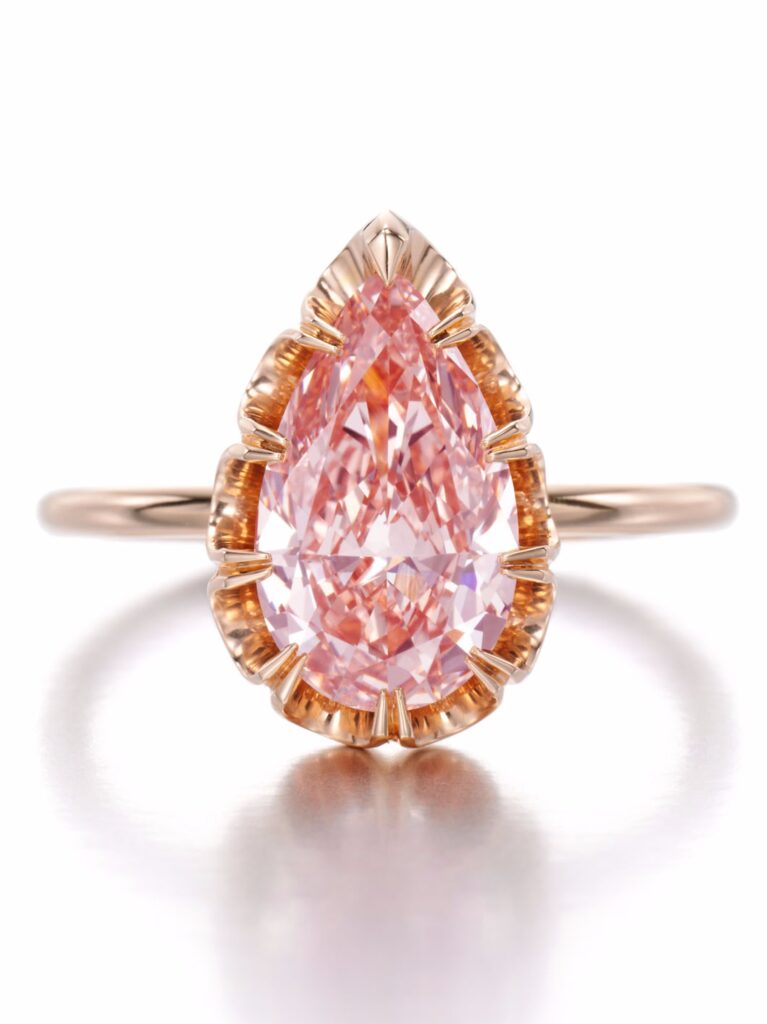
In the kaleidoscope of the world’s most extraordinary gemstones, the Pink Star Diamond stands out as a true marvel. With its exceptional size and breathtaking hue, this pink diamond is not just valuable; it’s a blushing beauty that has captivated the hearts of collectors and connoisseurs worldwide. Let’s embark on a journey to discover the story of the Pink Star Diamond, one of the most precious pink diamonds the world has ever seen.
A Gem of Exceptional Size
The Pink Star Diamond is an exceptional specimen, distinguished by its remarkable size and exquisite color. Weighing in at a jaw-dropping 59.60 carats, it’s one of the largest pink diamonds ever discovered. But it’s not just the size that makes it special; it’s the intensity of its color.
The Pink Star Diamond belongs to the rare and coveted group of pink diamonds known as Type IIa, celebrated for their chemical purity and lack of impurities that could alter the color. This diamond boasts an incredibly fancy, vivid pink color, the most sought-after hue in colored diamonds.
Discovery and Transformation
The journey of the Pink Star Diamond began deep within the Earth’s crust, where it formed over millions of years. This was originally a colossal 132.5-carat rough diamond discovered in the Premier Mine of South Africa. Its size and color immediately marked it as something extraordinary.
The rough diamond was meticulously cut and polished over almost two years. The cutting process required the utmost precision and skill to preserve as much of the diamond’s size and color as possible. The result was a breathtaking 59.60-carat pink diamond, radiating incomparable vibrancy.
A Star at Auction
The Pink Star Diamond made headlines worldwide when unveiled at a Sotheby’s auction in Geneva in November 2013. The anticipation and excitement were palpable as collectors and diamond enthusiasts gathered to witness the sale of this incredible gem. Bidding was fierce, with collectors vying to own this remarkable pink diamond.
The hammer finally fell, and the Pink Star Diamond found a new home, selling for an astonishing $71.2 million, setting a world record for the highest price ever paid for a diamond at auction. This historic sale cemented the Pink Star Diamond’s status as one of the world’s most valuable and sought-after gemstones.
A Legacy of Beauty
The Pink Star Diamond is more than just a gem; it’s a testament to the enduring allure of rare and exceptional diamonds. Its exceptional size and stunning color have elevated it to prestige and desirability that few gemstones can match.
As the Pink Star Diamond continues to capture the imagination of collectors and admirers, it reminds us of the incredible beauty that the Earth can create and the exceptional treasures it holds beneath its surface. This blushing beauty, with its rich history, rarity, and vibrant color, serves as a reminder that the world of diamonds is a realm of wonder and enchantment.
A World of Awe
The Pink Star Diamond’s story extends beyond its size and value; it symbolizes natural wonder and human ingenuity. With its vivid pink hue, this remarkable gemstone has left a lasting impression on those who have gazed upon it. Its exceptional attributes have made it the center of attention in gemology and auction houses.
The sale of the Pink Star Diamond marked a significant moment in the history of precious gemstones. It was a testament to the enduring allure of unique, exceptionally colored diamonds and the desire to own a piece of the extraordinary. The diamond’s journey from deep within the Earth to the glamorous halls of auction houses speaks of human fascination and appreciation for rare and beautiful creations.
In its new home, the Pink Star Diamond continues to be a source of inspiration for jewelers and collectors alike. Its vibrancy and the prestige associated with it remind us that beauty transcends time and boundaries. It represents the world’s most valuable pink diamond and the lasting enchantment of the Earth’s hidden treasures.
The Pink Star Diamond, with its blushing beauty and unique characteristics, invites us to marvel at the wonders of the natural world and the artistic prowess of those who reveal the inner splendor of Earth’s most extraordinary creations. It is a beacon of the incredible potential hidden beneath our feet, waiting to be discovered, polished, and celebrated as a true marvel of nature and human achievement.
The Graff Pink – A Rarity in Pink
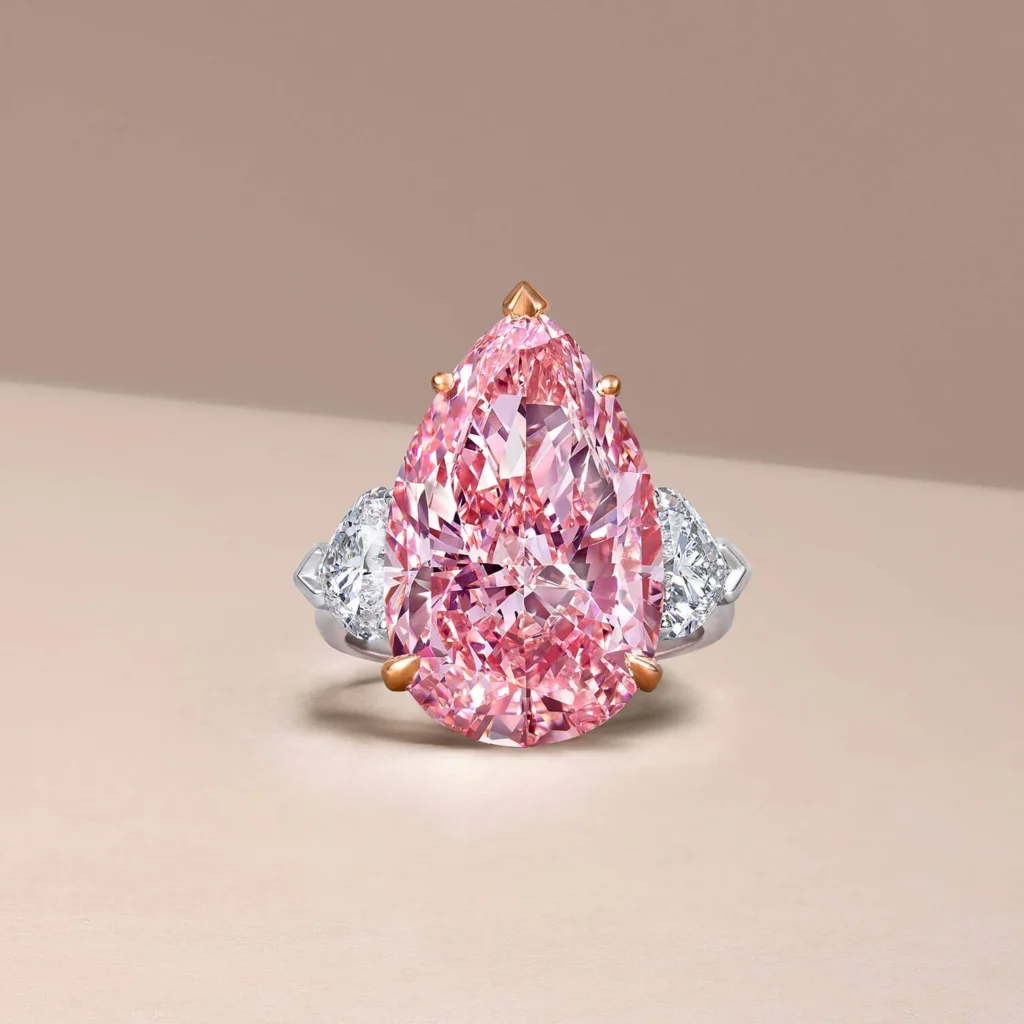
In the world of precious gemstones, Graff Pink is a rarity in pink diamonds. This captivating gem, with its mesmerizing hue, has a history as remarkable as its breathtaking beauty. The story of Graff Pink leads us to a world of exquisite gemstones, master craftsmanship, and a historic auction that set records in the world of diamonds.
The Allure of Pink
Pink diamonds are among the rarest and most coveted gemstones in the world. Their captivating color ranges from the faintest blush to the deepest rose; the Graff Pink is exceptional among these. This remarkable gem is known for its extraordinary size and intense, vivid pink hue, often described as a “fancy intense pink.”
The Graff Pink’s allure is not only in its color but also in its internal characteristics. It belongs to the group of Type IIa diamonds, characterized by their exceptional purity and minimal presence of impurities. This rare combination of size, color, and quality places the Graff Pink in a league of its own.
A Diamond’s Journey
The story of the Graff Pink begins in the Golconda mines of India, renowned for producing some of the world’s most famous diamonds. It was here that this extraordinary gem was unearthed. The diamond, in its rough form, weighed an impressive 24.78 carats. Its journey from rough to polished stone was meticulous and labor-intensive, revealing its true beauty.
Setting a World Record
The Graff Pink took the world by storm when it was presented at auction. The gem’s stunning color and exceptional quality were the centerpiece of the Sotheby’s Magnificent Jewels Sale in Geneva in 2010. The anticipation of the auction was palpable, and collectors and enthusiasts worldwide eagerly awaited the sale.
When the hammer finally fell, it marked a historic moment in the world of diamonds. The Graff Pink was sold for a staggering $46.16 million, setting a world record for the highest price ever paid for a diamond at auction. This sale showcased this gem’s exceptional beauty and rarity and highlighted the enduring allure of pink diamonds in the eyes of collectors and connoisseurs.
A Legacy of Rarity
The Graff Pink continues to be celebrated as a rarity in the world of gemstones. Its vivid color and remarkable size set it apart from other diamonds, symbolizing beauty, luxury, and prestige. This captivating gem serves as a reminder that, in the world of precious stones, some stand out not just for their monetary value but for their exceptional rarity and allure.
Graff Pink is a testament to the extraordinary wonders the Earth can create, waiting to be discovered and transformed into objects of beauty and desire. Its journey from the mines of India to the auction halls of Geneva is a story of human fascination, artistic mastery, and the timeless appeal of exquisite gemstones.
A Testament to Rarity and Beauty
The Graff Pink’s journey from the depths of the Earth to the auction block represents more than just a financial transaction; it’s a testament to the enduring allure of beauty and rarity. Pink diamonds, in particular, have always held a special place in the world of gemology. Their enchanting hues are a reminder of the wonders that the natural world can create.
With its exceptional size and captivating color, the Graff Pink showcases what makes pink diamonds desirable. Its vivid pink hue, described as “fancy intense pink,” is a marvel of nature. Pink diamonds like this are a testament to geological marvels and the dedication and skill of those who transform rough stones into polished gems of extraordinary beauty.
Its journey from India’s Golconda mines, known for their incredible diamond finds, to the auction house in Geneva is a testament to human fascination with rare and exquisite gemstones. The record-breaking sale of the Graff Pink highlights the enduring appeal of pink diamonds and the world’s fascination with these unique treasures.
The Graff Pink now holds a special place in the world of rare and valuable gemstones. It’s a symbol of beauty and rarity, a reminder of the treasures hidden beneath the Earth’s surface, waiting to be discovered and transformed into objects of desire. As this remarkable gem continues to be celebrated for its exceptional qualities, it stands as a beacon of the incredible potential hidden beneath our feet, waiting to be unveiled and appreciated by those who value the extraordinary beauty of the natural world.
The Dresden Green Diamond – Green with Envy
The Dresden Green Diamond is among the most extraordinary in the enchanting world of rare and exquisite gemstones. This captivating gem, known for its remarkable green hue, is not just unique; it’s one of the largest and finest green diamonds ever discovered. Let’s embark on a journey to explore the distinctive characteristics of the Dresden Green Diamond and uncover the rich history that surrounds it, including its time in the grandeur of Dresden’s Royal Palace.
A Green Marvel
The Dresden Green Diamond is a true marvel of nature. It’s renowned for its exceptional green color, often described as a “fancy green.” This vivid hue is one of the rarest and most sought-after colored diamonds. The Dresden Green Diamond’s color results from exposure to natural radiation for millions of years, imbuing it with a deep, mesmerizing green.
Unique Characteristics
What makes the Dresden Green Diamond even more extraordinary are its unique characteristics. This magnificent gemstone boasts a cushion-cut design and weighs an impressive 41 carats. It is one of the largest green diamonds, making it a remarkable specimen. Its size and vivid color set it apart from other gemstones, creating a gem of immense value and desirability.
A Regal History
The Dresden Green Diamond’s history is as rich as its color. It was originally discovered in the Golconda mines of India, renowned for producing some of the world’s most famous diamonds. Early in the 18th century, Friedrich Augustus II of Saxony acquired this extraordinary gem.
For more than two centuries, the Dresden Green Diamond was housed in Dresden’s Royal Palace, where it joined the treasure trove of the Saxon monarchs. The diamond was set in a hat ornament, displaying it prominently while worn on special occasions.
A Tale of Intrigue
The Dresden Green Diamond is not only fascinated with its beauty but also intrigued with its stories. During World War II, the Germans hid the diamond in a salt mine to protect it from the advancing Allied forces. This historic gem survived the war and was even recovered, ensuring its l continued to shine.
A Treasured Exhibit
Today, the Dresden Green Diamond is displayed at the Albertinum Museum in Dresden, Germany. It continues to captivate visitors with its vibrant color and remarkable size. This gem represents not only a significant piece of Dresden’s history but also a symbol of the enduring appeal of exquisite gemstones.
The Dresden Green Diamond’s journey, from the depths of the Golconda mines to the grandeur of Dresden’s Royal Palace, is a testament to the enduring allure of exceptional gemstones. It reminds us that the Earth holds hidden treasures of immense beauty, waiting to be discovered and appreciated by those who value the extraordinary. The Dresden Green Diamond, with its exceptional green hue and rich history, invites us to marvel at the wonders of the natural world and the unique treasures it holds.
The Necklace of the Maharaja of Patiala – A Royal Heirloom
In the world of opulent jewelry, the Necklace of the Maharaja of Patiala shines as a masterpiece of Indian craftsmanship and regal splendor. This legendary piece of jewelry carries with it a rich history, an intricate design, and a connection to the illustrious world of Indian royalty. Join us on a journey to the magnificent history of the Necklace of the Maharaja of Patiala, a true royal heirloom.
A Glimpse into Opulence
The Necklace of the Maharaja of Patiala represents the pinnacle of Indian jewelry artistry and royal extravagance. Crafted with meticulous attention to detail, it epitomizes the grandeur and luxury of the Maharaja’s court. This magnificent piece has captured the imagination of jewelry connoisseurs and admirers worldwide.
A Maharaja’s Treasure
The story of this necklace begins with Bhupinder Singh, the Maharaja of Patiala, a prominent princely state in British India. He was renowned for his extravagant lifestyle and fondness for acquiring and commissioning exquisite jewelry. It was during his rule in the early 20th century that this necklace came into being.
Intricate Design
What sets the Necklace of the Maharaja of Patiala apart is its intricate design, which reflects the opulence and grandeur of the Maharaja’s court. The necklace is an impressive display of craftsmanship, featuring a multi-tiered design adorned with exquisite gemstones and pearls. Its grandeur is a testament to the Maharaja’s desire to own a piece of jewelry that would symbolize his authority and wealth.
Legendary Gemstones
The necklace has a stunning assortment of gemstones, including large and rare yellow diamonds. The most prominent gem, the seventh-largest diamond in the world at the time, is known as the “De Beers Diamond.” This remarkable yellow diamond alone weighs an astonishing 234.65 carats.
A Royal Connection
The Necklace of the Maharaja of Patiala is not just a piece of jewelry but a direct link to the history of Indian royalty. It’s a symbol of the Maharaja’s wealth and power and his desire to have a piece of jewelry that would rival any other in the world. It represents the grandeur of the princely states of India and the luxury of a bygone era.
The necklace is also a testament to the enduring allure of Indian jewelry craftsmanship. It showcases the skill and creativity of the artisans who created this work of art. The intricate design, the legendary gemstones, and the royal connection make this necklace a true masterpiece of Indian jewelry.
As we journey through the world of exquisite jewelry designs, we find ourselves captivated by the enduring allure and timeless beauty these remarkable creations represent. These jewels’ history, artistry, and cultural significance weave a tapestry of human fascination with the extraordinary. In this conclusion, we’ll reflect on the reasons behind their enduring appeal and the stories they tell.
Exquisite jewelry designs hold a timeless appeal that transcends generations. They beckon to us with their enchanting beauty, unique gemstones, and intricate craftsmanship. The allure of these creations lies not just in their monetary value but in the stories they carry, the history they embody, and the artistry they showcase.
From the Pink Star Diamond’s vibrant hue to the Dresden Green Diamond’s rich history, from the Fabergé Eggs’ intricate surprises to the Necklace of the Maharaja of Patiala’s royal connection, these jewels speak to our deepest desires for beauty and luxury. They are a testament to the human fascination with rare and extraordinary gemstones and artisans’ unwavering dedication to transforming rough stones into polished treasures.
Each exquisite jewelry design is like a living piece of history, offering us a glimpse into the past. They tell the tales of ancient gem mines, royal courts, and a time when jewelry was more than just adornment; it symbolized power and prestige. The Dresden Green Diamond’s journey from India to a German salt mine embodies stories of intrigue and resilience. The Fabergé Eggs, created for Russian royalty, reflect the artistic triumph of the House of Fabergé. These jewels are cultural artifacts, preserving and celebrating the heritage of their times.
The intricate designs of these jewelry pieces are a testament to human artistry. From the ornate detailing of the Fabergé Eggs to the meticulous craftsmanship behind the Graff Pink, they showcase the ingenuity and creativity of artisans. The craftsmanship of cutting and polishing exceptional gemstones celebrates human skill and dedication. These creations have inspired contemporary artists and designers, leaving a lasting mark on the world of jewelry design.
Exquisite jewelry designs are not just pretty baubles; they hold cultural significance. The Necklace of the Maharaja of Patiala, with its legendary gemstones, represents the luxury of princely India. The Fabergé Eggs, created for the Russian Imperial family, symbolize a golden age of imperial elegance. These jewels remind us of the diverse cultures that have celebrated and adorned themselves with extraordinary gemstones.
In conclusion, exquisite jewelry designs are a realm of enduring beauty, history, and craftsmanship. These creations, from the Pink Star Diamond to the Fabergé Eggs, have captured the hearts and imaginations of people worldwide. They are more than just gems; they are symbols of human fascination with the extraordinary. As we admire their timeless elegance, we continue to be enchanted by the wonders of the natural world and the artistic ingenuity of those who transform raw stones into precious treasures.








